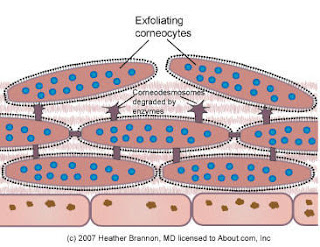When it comes to cleansing preparations for men, you (yeah, I'm talking to the men) don't have as many options as women. Well, that's if you only choose to use products specifically for men. Most cleansers for men are gel/foaming cleansers. Actually, I've only seen gel-cleansers for men. Hmmm...
I suppose this is because men, generally have oilier skin types than women because of their androgenic hormones. Men's sebum secretion remains high during the ageing process so their (your) skin also tends to stay oilier for longer. This is why many male cleansing produst (and even male facial products in genereal) contain tea-tree, because it is antiseptic and antibacterial and thus helps with congestion caused by oiliness and/or shaving irritation.
This, however, doesn't mean that ALL men have oily skin and ALL men prefer gel cleansers. If you have a combination or drier skin type, there's nothing wrong with a milky cleanser. It is up to you. They should cleanse equally well. Also, if you cannot find your desired cleansing preparation in a men's range, using a "female" product is not going to harm you. If you are concerned about the packaging, there are many products that aren't packaged specifically for woman. I haven't seen a cleanser in a pink bottle in a VERY long time. A lot of product houses have simple colours and designs. If it's still an issue, decant it into another container, or hide it in your cupboard. Simple.
Miss B













